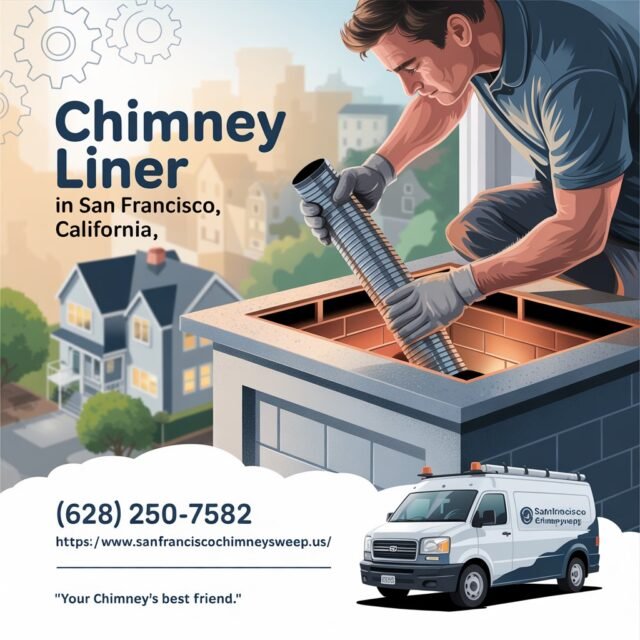If you’ve got a fireplace, chances are you enjoy the warmth and comfort it brings during colder months or just love the cozy vibe it adds to your living room. But while you’re busy enjoying the flames, your chimney is doing a lot of work behind the scenes. And one key player in that system is something you can’t even see: your chimney liner.Think of the chimney liner as the chimney’s protective shield. It lines the inside of your flue and keeps heat, smoke, and harmful gases where they belong outside your living space. Luckily, you don’t have to be a pro to do a basic chimney liner inspection. In this guide, we’ll walk through how to inspect your chimney liner in 5 simple, beginner-friendly steps. If you’re in the Southeast and looking for extra help, it might be time to consider professional services like Chimney Liner in Charlotte.
Step 1: Make Sure It’s Safe to Start
Before you do anything chimney-related, safety comes first. You’re going to be working near soot, possibly sharp materials, and if you’re looking up the flue ash and debris that can fall on you.
Here’s your prep list:
| Task | Why It Matters |
| Let the fireplace cool 100% | Hot embers can hide under ashes—give it a full day |
| Wear safety goggles and gloves | Protects eyes and hands from soot, dust, and debris |
| Use a flashlight or headlamp | Chimney interiors are pitch black without lighting |
| Lay down a drop cloth | Catch falling soot or tile inside your fireplace |
If you’re using a ladder to inspect from the roof, make sure it’s stable and placed on solid ground. Better yet, have someone spot you.
Step 2: Check the Firebox for Clues
Before you start looking up the chimney, start at the bottom. The firebox—the area where the fire actually burns often gives clues about what’s happening inside the liner.
Look for:
- Pieces of clay tile or flue material (they shouldn’t be there!)
- Excess soot buildup or strange staining
- A strong creosote smell, even when there’s no fire
- Water stains or rust around the damper
If you see flaking tile, black chunks, or signs of moisture, those are big red flags that the liner might be damaged or failing.
Step 3: Look Up the Flue (Yes, Really)
This part might feel a little awkward, but it’s doable. Grab your flashlight and carefully look up into the chimney flue. You’re trying to get a visual on the liner’s condition. Is it smooth? Are there cracks or gaps? Can you see soot or creosote buildup?
Some things to look for:
- Cracks or missing pieces
- Rusty or warped metal if you have a stainless-steel liner
- Gaps between liner sections
- Unusual debris like feathers, leaves, or animal nests
You may not be able to see the full length of the chimney and that’s totally fine. But if what is visible looks rough, chances are the rest isn’t much better.
💡 Pro Tip: Take a photo with your phone using flash sometimes it catches cracks or damage that’s hard to spot with just your eyes.
Step 4: Use a Chimney Mirror or Basic Camera Tool
Want to go a step further? You can use a simple inspection mirror or even a smartphone on a selfie stick to get a better look up the flue. (Sounds funny, but it works.)
Some hardware stores sell chimney inspection mirrors, which are heat-resistant and angled so you can see inside without craning your neck. Or, if you’re more techy, a DIY inspection camera with a flexible cable (the kind mechanics use) is even better. Some plug into your phone for easy viewing.
You’re looking for:
- Discoloration or crumbling in clay liners
- Flaking or pitting in metal liners
- Creosote buildup that looks glossy or thick
Keep in mind: if you’re seeing damage even with just a basic setup, it probably means it’s time to call in a professional for a full scan.
Step 5: Schedule a Professional Camera Inspection (If Needed)
This one might not be DIY, but it’s worth including. If anything during your inspection raised concerns cracks, debris, animal signs, weird smells it’s best to get a chimney professional involved. They can run a video scan of the entire chimney liner using specialized equipment.
One experienced sweep put it this way:
“You wouldn’t drive a car with no brakes. Don’t use a fireplace without checking the liner.”
If repairs or replacements are needed, a pro will walk you through your options whether that’s relining, patching, or switching to a stainless-steel insert.
Why This Matters More Than Most People Think
The chimney liner might be out of sight, but it’s far from a “set it and forget it” situation. A damaged liner doesn’t just affect your fireplace’s performance it affects your entire home’s safety. Carbon monoxide leaks, chimney fires, and long-term structural damage are all on the list of risks.
Final Thoughts: Know What’s Going On Behind the Flames
Fireplaces are one of those features that make a house feel like home. But behind the charm is a working system that needs regular checkups just like a car or an HVAC unit.Taking time once a year (or at least every couple of seasons) to inspect your chimney liner is a simple step with a big payoff. You don’t need fancy gear or professional-level skills to spot the obvious signs and when in doubt, it’s never a bad idea to call in a chimney pro.And if you’re in the Carolinas and want to make sure everything’s working like it should, it’s worth looking into a trusted service for Chimney Liner in Charlotte.Your fireplace works hard make sure it’s protected from the inside out.
Read more:Chimney Sweep







